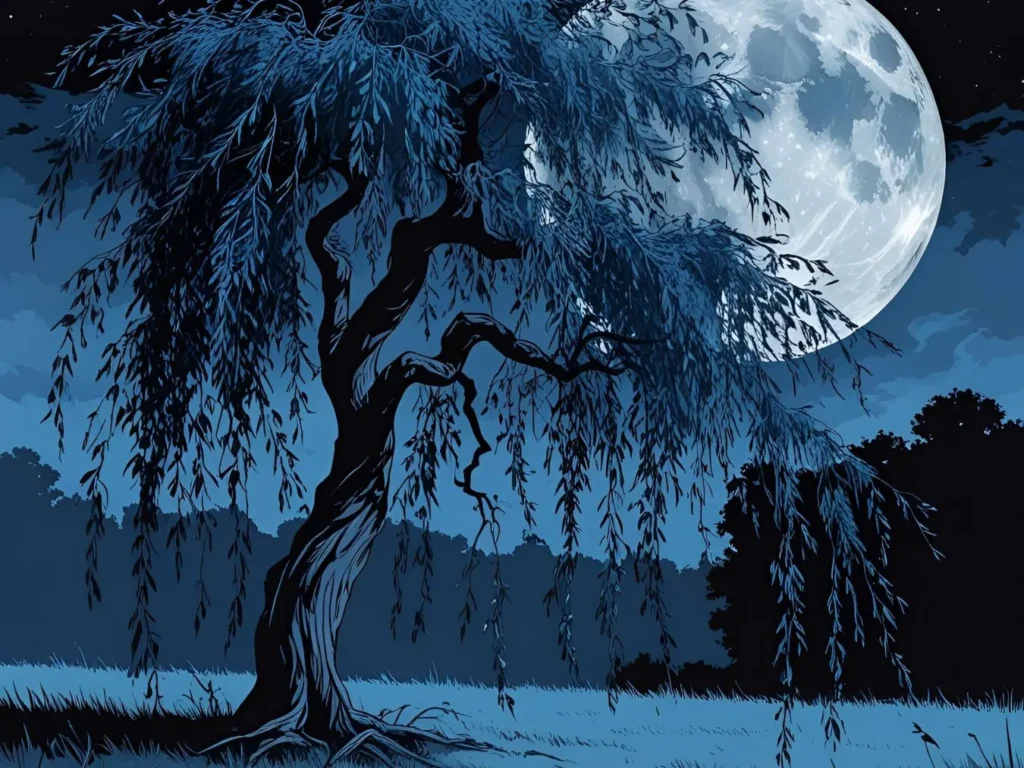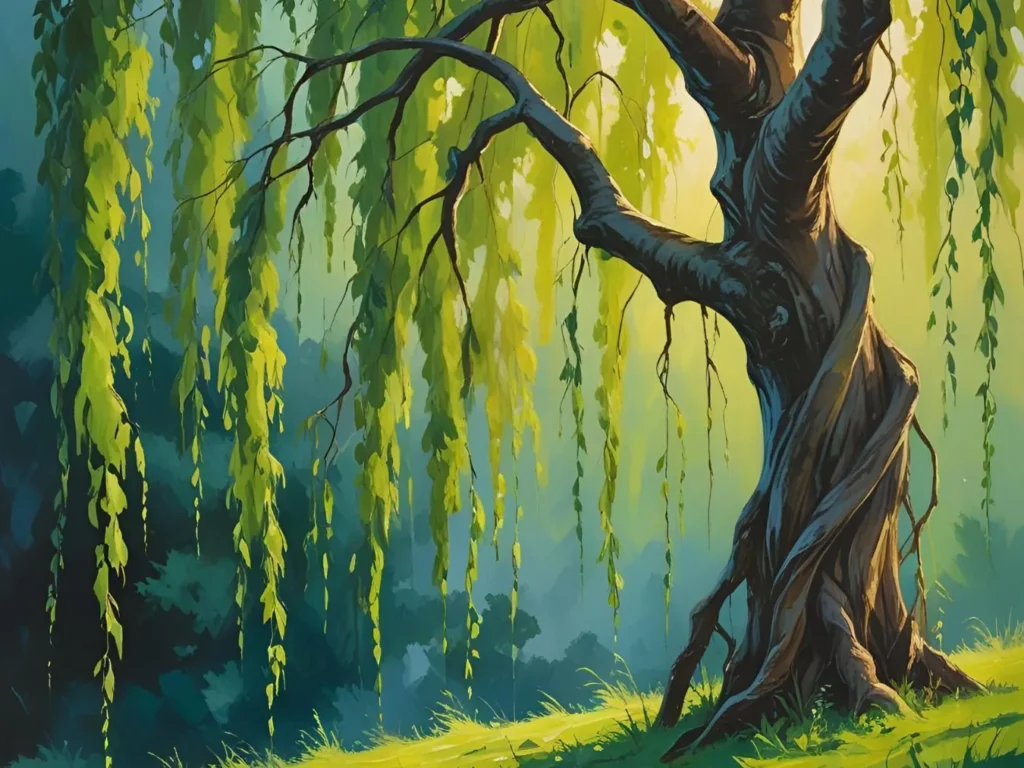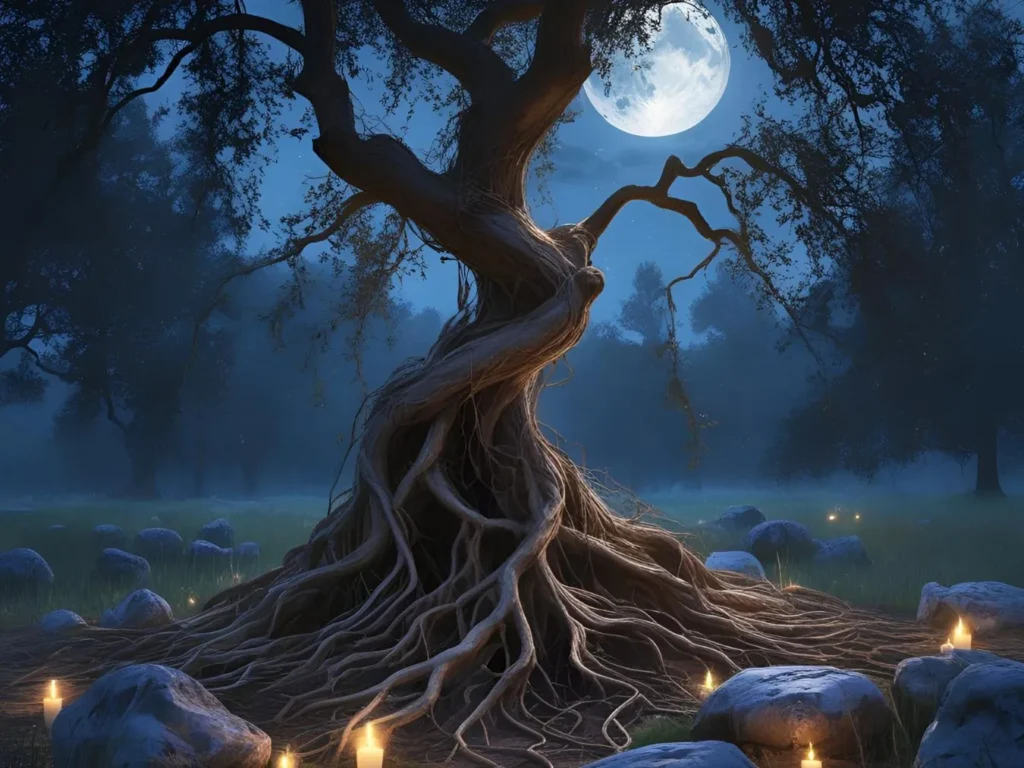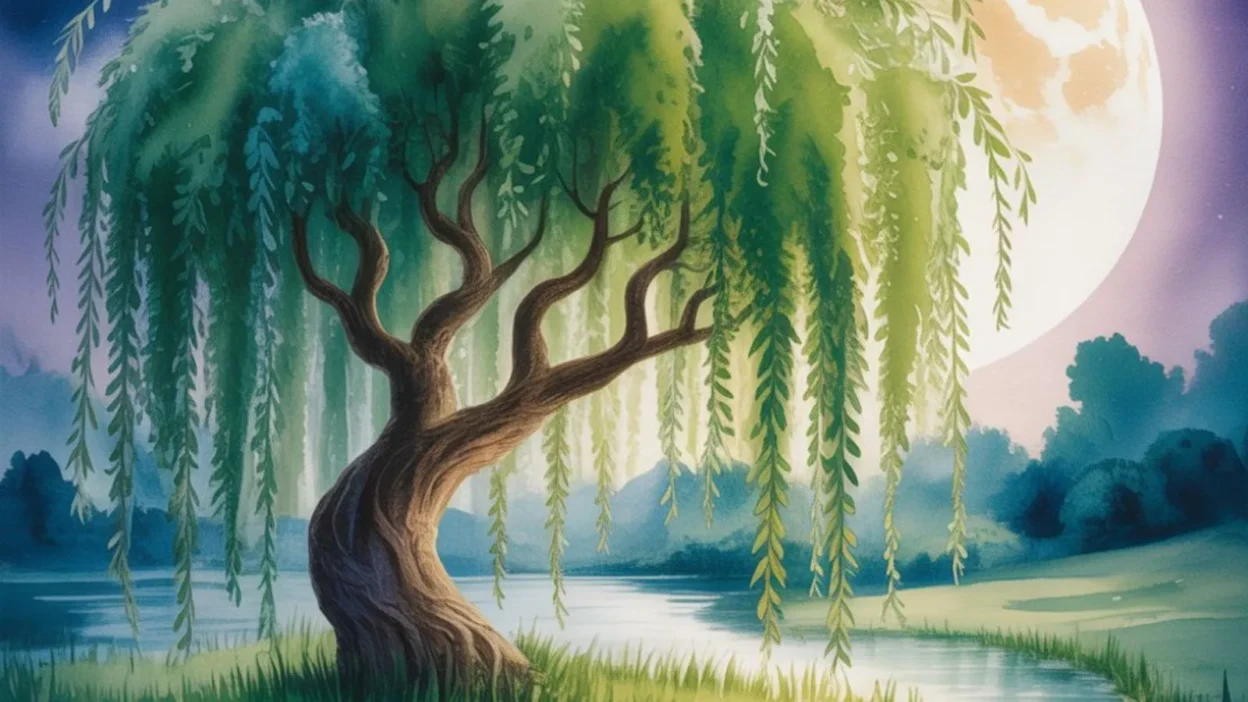When I was ten, I found a quiet place beneath a large willow tree near my grandmother’s home.
Its long, swaying branches danced in the wind like soft fingers brushing the earth.
Whenever I felt lost, lonely, or confused, I’d sit under that tree. It didn’t speak, but it understood.
I didn’t know it then, but the willow tree held a deep spiritual power — a symbol of healing, resilience, and emotional release.
Many cultures and spiritual paths have revered the willow tree as a source of inner strength and gentle wisdom.
If you’ve recently noticed a willow tree in your dreams, in nature, or during a tough emotional time, it may not be a coincidence.
Let’s dive deep into the symbolism of the willow tree, unlocking its emotional and spiritual secrets.
Willow Tree Symbolism in the Bible

Although the willow tree is not heavily featured in the Bible, it carries significant spiritual meaning in the few places it does appear.
In Leviticus 23:40, the willow is mentioned as part of the celebration during the Feast of Tabernacles, symbolizing joy and renewal after hardship.
The Israelites were instructed to gather branches of leafy trees, willows of the brook, and rejoice before God.
Biblically, the willow tree symbolizes:
- Restoration after struggle
- Mourning with the promise of comfort
- A place near water and spiritual nourishment
Because it grows near water, the willow often represents a soul that remains flexible, humble, and rooted in faith even through adversity.
Just as the willow bends but doesn’t break, so too can a person of faith endure life’s storms with grace.
Weeping Willow Tree Symbolism
The weeping willow, with its drooping branches, carries strong associations with grief, sorrow, and emotional release.
Its name alone evokes tears. But that’s not the full story.
Symbolically, the weeping willow means:
- Letting go of emotional pain
- Healing from grief
- The beauty in sadness
While the tree appears to be weeping, its branches continue to grow and its roots reach deep into the earth, showing us that there is power in vulnerability.
For anyone mourning a loss or facing emotional turmoil, seeing a weeping willow may be a spiritual sign that it’s time to cry, cleanse, and begin again.
Willow Tree Symbolism in Literature

Writers have long used the willow tree as a symbol of deep emotion, especially in poetry and classic literature.
It often appears in scenes involving heartbreak, memory, and transformation.
Common literary themes include:
- Lost love and longing
- Melancholy beauty
- Emotional endurance
For example, in Greek mythology, Orpheus is said to have carried a willow branch as he entered the underworld in search of his love, Eurydice.
This tale connects the willow to hope through sadness, and the bravery it takes to face emotional darkness.
In literature, the willow tree doesn’t just represent sadness — it reveals that sadness can coexist with strength.
Dead Willow Tree Symbolism
A dead willow tree can stir deep feelings — especially if you feel spiritually connected to it.
Its symbolism may feel darker, but it carries a powerful message of transition and truth.
Spiritual meanings of a dead willow:
- The end of a life chapter
- Letting go of old emotions
- Facing truths we’ve buried
- A call to renew your spirit
A dead willow may reflect an area of your life that has grown stagnant or heavy.
Spiritually, it can signal the need to release guilt, grief, or old energy, making room for new emotional roots to grow.
Willow Tree Symbolism Meaning

So, what does a willow tree really mean on a deeper level?
Core symbolic meanings:
- Flexibility: Bends in the storm but never breaks
- Emotional healing: A sacred space for tears and renewal
- Inner strength: Quiet power and feminine resilience
- Spiritual connection: Rooted near water, bridging body and soul
- Cycles of life: Growth, release, renewal
Across cultures, the willow has stood as a tree of feminine energy, often connected to the moon, water, and intuition.
Whether appearing in your dreams or daily life, it often invites emotional reflection and gentle self-care.
Willow Tree Symbolism Shakespeare
William Shakespeare frequently used trees to symbolize deeper emotions, and the willow appears in some of his most tragic and moving scenes.
In “Othello,” the character Desdemona sings the “Willow Song” before her tragic death. The tree here reflects:
- Foreboding sorrow
- Love lost and unreturned
- The quiet strength of women in grief
Desdemona’s soft, sad singing beneath the willow tree captures the stillness of pain, but also the dignity of the heart that keeps beating even in sorrow.
Shakespeare knew — as we do — that the willow is not weak. It is wise, soft-spoken, and strong.
What is a Willow Tree Symbolism

In simple terms, willow tree symbolism is the spiritual expression of:
- Emotional healing
- Surrender without defeat
- The power of softness
- Letting go to grow
To see or dream of a willow tree often invites you to:
- Honor your emotions
- Allow yourself space to feel
- Heal in your own time
- Trust the process of release
Like the willow that grows near rivers, your spirit is encouraged to stay fluid, flowing, and forgiving — even when life gets heavy.
Willow Tree Symbolism Hamlet
In Shakespeare’s “Hamlet,” the willow tree appears in the haunting tale of Ophelia, who drowns near a willow tree after a descent into emotional madness and heartbreak.
Symbolism in this context:
- Grief unexpressed turns into sorrow too heavy to carry
- The willow serves as a witness to pain
- A warning about ignoring emotional needs
Ophelia’s story is tragic, but the willow reminds us that unspoken emotions can take root too deeply. It’s a symbol that says: Speak your truth before it overwhelms you.
Real-Life 3 Short Scenarios
- Maya’s Divorce Healing
After a painful divorce, Maya walked by a willow tree every evening in her local park. At first, she cried under it. Over months, it became her space of peace. The tree didn’t fix her pain — but it held it, like a friend who listens without judgment. - Jesse’s Dream of a Falling Willow
Jesse kept dreaming of a willow tree with leaves that were falling like tears. After some reflection, he realized he’d been holding in grief over his father’s passing. He allowed himself to mourn. That dream was his soul asking for healing. - Lena’s Creative Rebirth
Burnt out from work, Lena quit her job and took a sabbatical. On a trip, she painted a weeping willow by a lake. Later, she realized it was her spirit calling her to rest and reconnect with her inner self. That painting now hangs in her studio.
FAQs
1. What does it mean to dream of a willow tree?
Dreaming of a willow tree often symbolizes emotional processing, grief, or the need to let go of burdens. It can also suggest healing is near.
2. Is the willow tree associated with death?
While not always, the weeping willow can represent mourning or transition. It doesn’t symbolize death itself, but rather the emotions around it.
3. Why do people plant willow trees at cemeteries?
Because they represent grief and peace, willow trees are often planted as living symbols of remembrance and comfort in times of loss.
4. Are willow trees considered sacred?
Yes. In many cultures (like Celtic and Chinese traditions), the willow tree is sacred, often linked to the moon, intuition, and the divine feminine.
5. Can a willow tree symbolize hope?
Absolutely. Despite its sorrowful appearance, the willow always grows back. It reminds us that new life follows emotional release.
Conclusion:
The willow tree doesn’t shout, it whispers. It doesn’t fight the wind, it flows with it. And it doesn’t hide its tears, it lets them fall. In a world that often tells us to “toughen up,” the willow tells us it’s okay to feel, bend, and cry. There is strength in softness.
So, if the willow tree has shown up in your life — in a dream, a walk, or your heart — take it as a sacred sign. Your spirit is ready to release, heal, and grow again.
The symbolism of the willow tree is not just about sorrow — it’s about survival, transformation, and the quiet beauty of the soul. Let the willow remind you: You are allowed to feel deeply, and you are strong enough to rise again.




